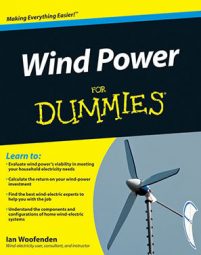Analyzing your wind resource (your site's average wind speed, measured in miles per hour) is one of the hardest jobs you face when selecting a wind-electric system; no single method gives you exact numbers. To come up with a good estimate of your site's average wind speed, combine as many of the following strategies as possible:
Put up a recording anemometer at the proposed wind generator height to measure your actual wind resource; you often need to do it over the course of a year or more.
Use a small test turbine with a watt-hour meter to give you some data while giving you a bit of energy; you can learn important lessons from the experience.
Consult wind maps and roses, which show generalized wind resource information for your area.
Sift through local weather data, which may be an excellent source of wind resource information.
Live on site with eyes and ears open to note seasonal variations in wind.
Climb something tall (like a tree that's on a high point on your property) and look at topography and obstructions; this can help you determine your optimum tower height.
Study vegetation, which may reflect how much wind you have; by reading the deformation of trees, you may be able to estimate your wind resource.
Talk with neighbors; they may give you valuable perspective on wind in your neighborhood, especially if your neighbors are wind-energy users.

